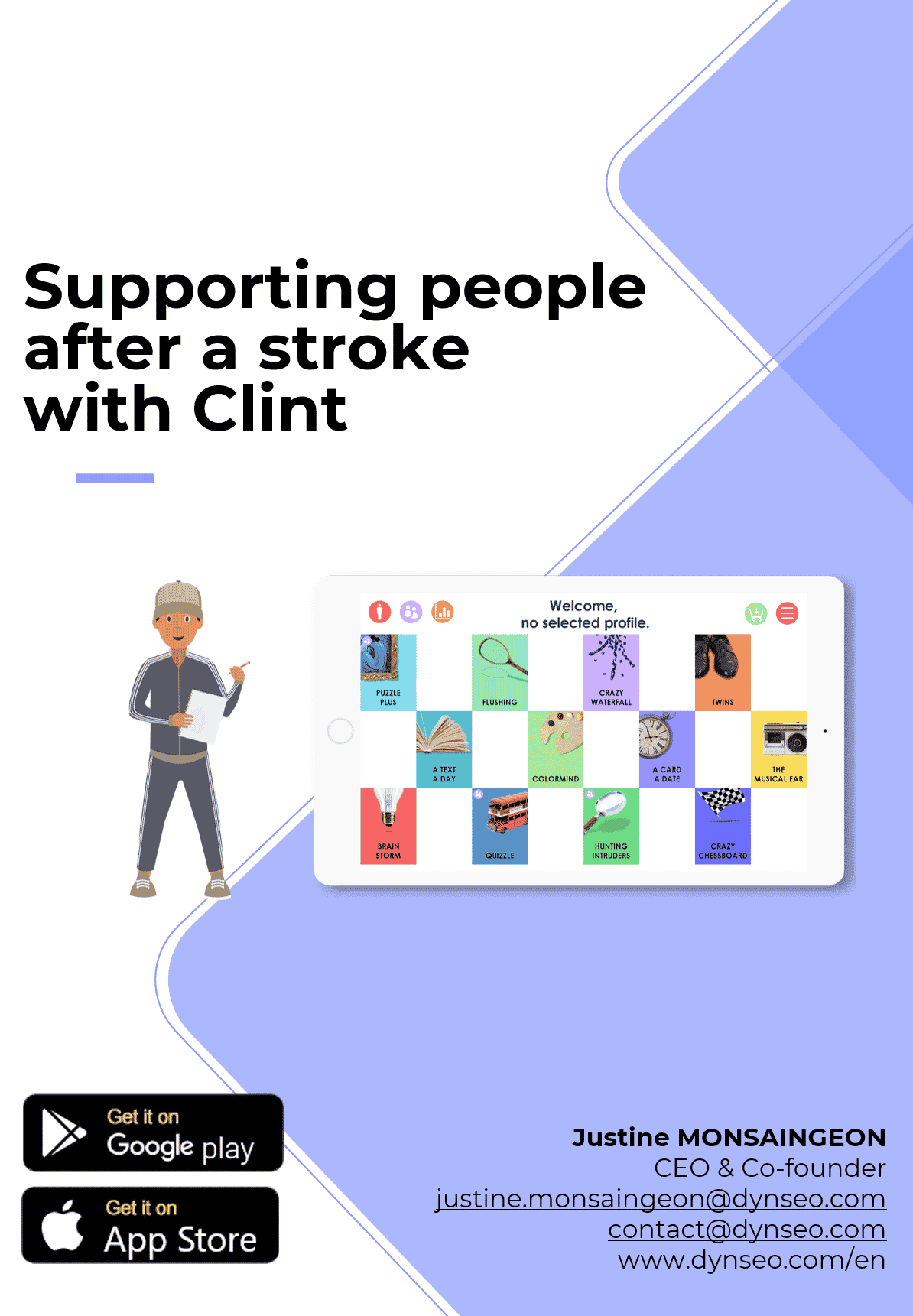In recent years, the integration of technology into healthcare has transformed the way we approach rehabilitation, particularly in the realm of speech therapy for post-stroke patients. As we navigate the complexities of recovery, we find that apps designed specifically for speech therapy can play a pivotal role in enhancing communication skills. These applications provide a platform for engaging exercises that can be tailored to individual needs, allowing us to practice speech and language skills in a supportive and interactive environment.
The convenience of having these tools readily available on our devices means that we can incorporate therapy into our daily routines, making it easier to maintain consistency and motivation throughout the recovery process. Moreover, the use of apps in post-stroke speech therapy offers a unique opportunity for real-time feedback and progress tracking. Many of these applications are designed with user-friendly interfaces that allow us to monitor our performance and identify areas that require additional focus.
This immediate feedback can be incredibly beneficial, as it encourages us to stay engaged and motivated while providing a sense of accomplishment as we see our skills improve over time. By leveraging technology in this way, we can create a more dynamic and personalized approach to speech therapy, ultimately leading to better outcomes for those affected by stroke.
Selecting the Right Apps for Post-Stroke Speech Therapy
Evaluating App Content and Features
The first step is to evaluate the app’s content and features. We should look for applications that offer a variety of exercises targeting different aspects of speech and language, such as vocabulary building, pronunciation practice, and sentence construction.
Customization and Accessibility
Additionally, we should consider whether the app provides options for customization, allowing us to tailor the exercises to our current skill level and therapeutic objectives. The app’s user interface and accessibility are also critical aspects to consider. As we may be working with individuals who have varying levels of comfort with technology, it is vital to select apps that are intuitive and easy to navigate.
Accessibility and Inclusivity
We should also take into account any potential barriers that may arise due to physical limitations or cognitive challenges. By choosing apps that are designed with accessibility in mind, we can ensure that all users can engage with the content effectively, fostering a more inclusive and supportive therapeutic environment.
Incorporating Apps into Speech Therapy Sessions

Integrating apps into our speech therapy sessions can significantly enhance the overall experience for both therapists and patients. By incorporating these digital tools into our practice, we can create a more interactive and engaging atmosphere that encourages active participation. For instance, we might begin a session by using an app to assess the patient’s current abilities, allowing us to identify specific areas that require focus.
This initial assessment can help us tailor our approach for the remainder of the session, ensuring that we address the most pressing needs while keeping the patient engaged. Furthermore, using apps during therapy sessions allows us to introduce a variety of activities that can break up the monotony of traditional exercises. We can alternate between app-based tasks and more conventional methods, such as conversation practice or reading aloud.
This blend of approaches not only keeps our sessions fresh and exciting but also helps reinforce learning by providing multiple avenues for practice. As we explore different activities within the app, we can encourage patients to set goals and celebrate their achievements, fostering a sense of accomplishment that can motivate them to continue their efforts outside of therapy.
Customizing Apps for Individual Patient Needs
One of the most significant advantages of using apps in post-stroke speech therapy is the ability to customize them for individual patient needs. Each stroke survivor has a unique set of challenges and strengths, which means that a one-size-fits-all approach may not be effective. By selecting apps that allow for personalization, we can tailor exercises to match each patient’s specific goals and preferences.
For example, if a patient struggles with word retrieval, we can focus on vocabulary-building exercises within the app that target this area while gradually increasing difficulty as they progress. Additionally, customization extends beyond just content; it also encompasses pacing and difficulty levels. Many apps offer adjustable settings that allow us to modify the speed at which exercises are presented or the complexity of tasks based on the patient’s current abilities.
This flexibility ensures that we can provide an appropriate level of challenge without overwhelming the individual, ultimately leading to a more positive therapeutic experience. By taking the time to customize our approach using these digital tools, we can create a more effective and enjoyable learning environment for our patients.
Monitoring Progress and Adjusting App Usage
As we incorporate apps into our post-stroke speech therapy practice, monitoring progress becomes an essential component of our approach. Many applications come equipped with built-in tracking features that allow us to assess performance over time. By regularly reviewing this data, we can identify trends in improvement or areas where additional support may be needed.
This ongoing assessment not only helps us adjust our therapy strategies but also provides valuable insights into how well the patient is responding to various exercises. In addition to tracking progress through app features, it is crucial for us to maintain open communication with our patients about their experiences using these tools. By encouraging them to share their thoughts on what they find helpful or challenging within the app, we can gain a deeper understanding of their needs and preferences.
This feedback allows us to make informed decisions about adjusting app usage or exploring alternative resources if necessary. Ultimately, this collaborative approach fosters a sense of ownership over their recovery journey, empowering patients to take an active role in their rehabilitation.
Encouraging Consistent App Usage at Home

Maximizing the benefits of speech therapy apps in post-stroke rehabilitation requires encouraging patients to use the apps consistently at home. Regular practice outside of therapy sessions is key to reinforcing learned skills, improving speech abilities, and promoting long-term progress. Here are several strategies we can use to help patients maintain consistency in using therapeutic apps and make the most of their recovery:
1. Establish a Structured Routine
Helping patients integrate app usage into their daily lives is essential for encouraging consistency.
- Set Specific Times: Suggest setting aside dedicated times each day for practicing with the app. By making this a regular part of their schedule, patients are more likely to stick with it.
- Create a Consistent Schedule: Consistency is key, whether it’s a 10-minute session in the morning or a longer session in the evening. Having a set time helps build habits and ensures that therapy isn’t neglected.
Incorporating app practice into a daily routine increases the likelihood of sustained engagement.
2. Set Achievable Goals and Milestones
One effective way to maintain motivation and track progress is by setting clear, achievable goals.
- Break Down Larger Goals: Instead of overwhelming patients with large objectives, break down their rehabilitation goals into smaller, more manageable milestones.
- Track Progress: Celebrate small wins like completing a specific exercise or achieving a certain score in the app. These milestones not only make the process less intimidating but also provide clear markers of success.
- Use the App’s Built-in Features: Many apps come with progress tracking tools that can show improvement over time, giving patients visual reinforcement of their hard work.
Setting and celebrating these small goals will help patients feel a sense of accomplishment, fostering continued engagement and motivation.
3. Provide Positive Reinforcement
Celebrating progress, even when it’s incremental, can significantly boost motivation.
- Praise Effort and Progress: Whether the patient has achieved a new level or successfully completed an exercise, acknowledging their efforts can encourage them to continue using the app.
- Encourage Family Involvement: Family members or caregivers can help celebrate victories and offer positive reinforcement, making the process more rewarding and reinforcing the patient’s efforts.
- Create a Supportive Environment: When patients feel supported at home, they are more likely to continue practicing. Caregivers can engage with the app alongside the patient to make the process feel more collaborative.
Positive reinforcement not only strengthens the patient’s self-esteem but also underscores the value of consistent practice in their recovery journey.
4. Provide Clear Instructions and Support
While patients are working at home, it’s essential to offer support to ensure that they use the app effectively.
- Clear Instructions: Make sure patients are familiar with the app’s functionality and know how to navigate it properly. Clear instructions and demonstrations can help alleviate any confusion or frustration.
- Troubleshooting: Ensure that patients have a way to reach out for help if they encounter issues or difficulties. A simple support system can keep them engaged rather than feeling discouraged.
Support from both therapists and caregivers helps create a seamless app usage experience, promoting long-term engagement.
5. Encourage Accountability and Reflection
Creating a sense of accountability can be a powerful motivator for consistent app use.
- Daily Check-Ins: Schedule brief check-ins with patients to discuss their app usage, review progress, and address any challenges.
- Reflect on Progress: Encourage patients to reflect on how they feel about their progress and how the app is helping them. This reflection can deepen their commitment to using the app regularly.
- Family Involvement: Involving family members in the check-in process can create a sense of shared responsibility, reinforcing the importance of regular practice.
These strategies help maintain a structured yet flexible approach that encourages patients to stay engaged with the app over time.
Addressing Challenges and Limitations of Using Apps in Speech Therapy
While there are numerous benefits associated with using apps in post-stroke speech therapy, it is essential for us to acknowledge potential challenges and limitations as well. One significant concern is the variability in technology access among patients. Not everyone may have access to smartphones or tablets, which could hinder their ability to utilize these resources effectively.
Additionally, some individuals may struggle with navigating technology due to cognitive or physical limitations resulting from their stroke. As therapists, it is our responsibility to identify these barriers and explore alternative solutions that ensure all patients have access to appropriate therapeutic resources. Another challenge lies in ensuring that patients remain engaged with app-based activities over time.
While many applications are designed to be interactive and enjoyable, there is still a risk that users may lose interest or become frustrated if they encounter difficulties. To mitigate this issue, we must actively monitor patient engagement levels and be prepared to introduce new activities or adjust existing ones as needed. By maintaining open lines of communication and fostering a supportive environment, we can help patients overcome obstacles they may face while using these digital tools.
Maximizing the Benefits of Apps in Post-Stroke Speech Therapy
To truly maximize the benefits of apps in post-stroke speech therapy, we must adopt a holistic approach that integrates these tools into every aspect of our practice. This means not only utilizing apps during therapy sessions but also encouraging their use at home and fostering collaboration between therapists, patients, and caregivers. By creating a comprehensive support system that encompasses all facets of recovery, we can enhance patient outcomes and promote lasting improvements in communication skills.
Furthermore, staying informed about emerging technologies and new app developments is crucial for us as therapists. The field of digital health is constantly evolving, with new resources becoming available regularly. By keeping abreast of these advancements, we can ensure that we are providing our patients with the most effective tools for their rehabilitation journey.
Ultimately, by embracing technology as an integral part of our practice and remaining committed to personalized care, we can unlock the full potential of apps in post-stroke speech therapy and empower our patients on their path to recovery.
For those interested in enhancing their understanding of cognitive functions and their relevance in therapeutic settings, such as post-stroke speech therapy, a related article worth reading discusses the broader concept of cognitive functions and their impact. This article, titled “What are Cognitive Functions?” provides a foundational understanding that can be beneficial when using apps designed for speech therapy with stroke patients. To explore this topic further and gain insights that could improve therapy outcomes, you can read the article here: What are Cognitive Functions?.



